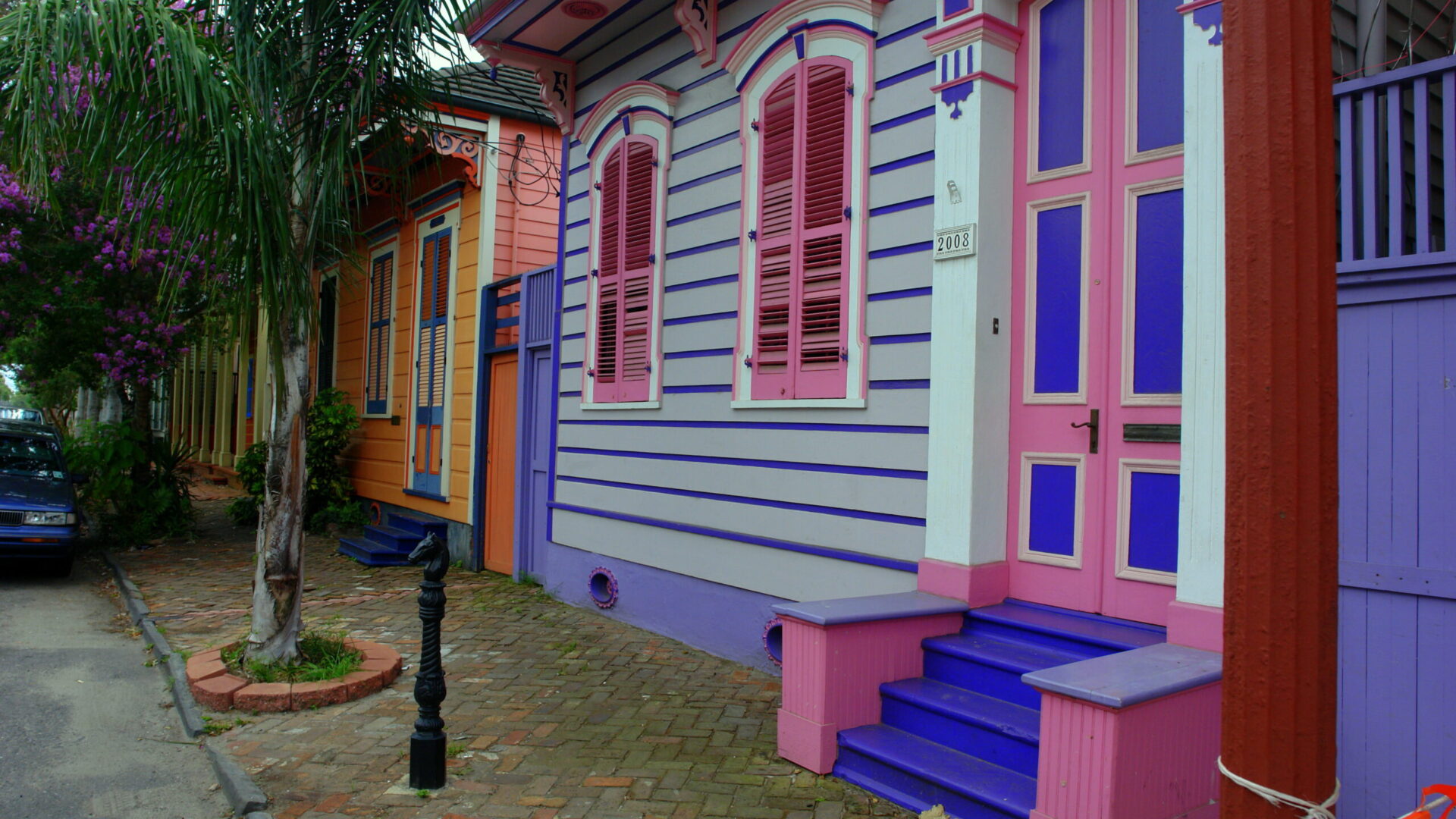A dynamic and exciting neighborhood, Bywater is filled with artist housing and galleries, a plethora of eclectic eateries, and historic buildings ranging from the grand to the humble. Tucked alongside the Mississippi River between Faubourg Marigny and Holy Cross, Bywater sits atop some of the earliest land grants in the city. The largest plantation here, known as La Brasserie, featured a brewery that historians believe was one of the first manufacturing enterprises in the city.
Land here was developed piecemeal starting in 1807, with large residential swaths, but also industrial sites made vibrant by the river and the railroad (which still today defines Bywater’s boundary along Press Street). In 1826, the Ursuline nuns built a convent compound near the present-day Industrial Canal, but they were displaced in 1912 in anticipation of the canal’s development. The canal was dug in 1916, dividing Bywater from neighboring Holy Cross. Despite the canal’s name, Bywater is no longer industrial. Now mostly residential, the neighborhood boasts an array of historic housing stock, from Victorian shotgun homes to Italianate mansions and Creole cottages. It is even home to the last 1820s Creole manor house in the city: the Lombard house at 3933 Chartres St., built in 1826. Bywater’s historic fabric has been protected since at least the 1970s, when the Bywater Neighborhood Association first formed. The neighborhood was listed on the National Register of Historic Places in 1993. Crescent Park, which opened in 2015, gives residents and visitors an opportunity to enjoy the riverfront. The park can be accessed in Bywater at Piety and Chartres streets, where visitors can climb a steep steel bridge dubbed the Rusty Rainbow. The park’s industrial touches speak to the site’s former maritime uses. A myriad of hip, tucked-away restaurants and cafes, quirky bars and clubs, independently owned art collectives and galleries keep the neighborhood’s diverse population out and about at all hours.



